Table of Contents
Overview
Joints are anatomical junctions where two or more bones meet. They vary widely in structure and function—from immobile cranial sutures to highly mobile synovial joints such as the shoulder or hip. Understanding their types, structure, and mechanics is essential for diagnosing and managing musculoskeletal conditions involving pain, instability, or movement restriction.
Definition
A joint (or articulation) is a point of contact between two or more bones. Not all joints allow movement—some exist purely for structural support.
Classifications
1. Fibrous Joints
- Joined by: Dense fibrous connective tissue
- Movement: None (immovable)
- Joint cavity: Absent
- Examples:
- Sutures – Between cranial bones
- Syndesmoses – Between tibia and fibula at the ankle
- Gomphosis – Tooth within alveolar socket, connected via periodontal ligament
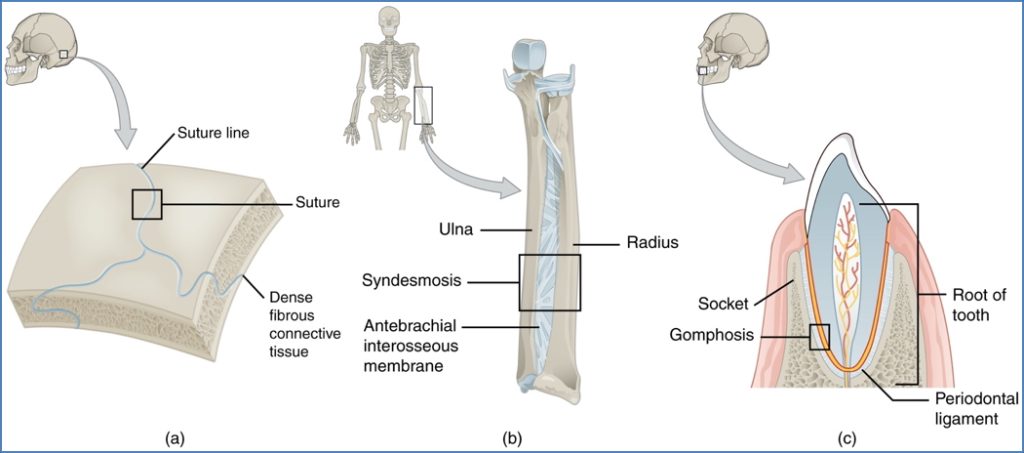
2. Cartilaginous Joints
- Joined by: Cartilage
- Movement: Limited (slightly movable)
- Joint cavity: Absent
- Subtypes:
- Synchondroses – Primary cartilaginous joints
- Example: Epiphyseal growth plates
- Symphyses – Secondary cartilaginous joints
- Examples: Intervertebral discs, pubic symphysis
- Synchondroses – Primary cartilaginous joints
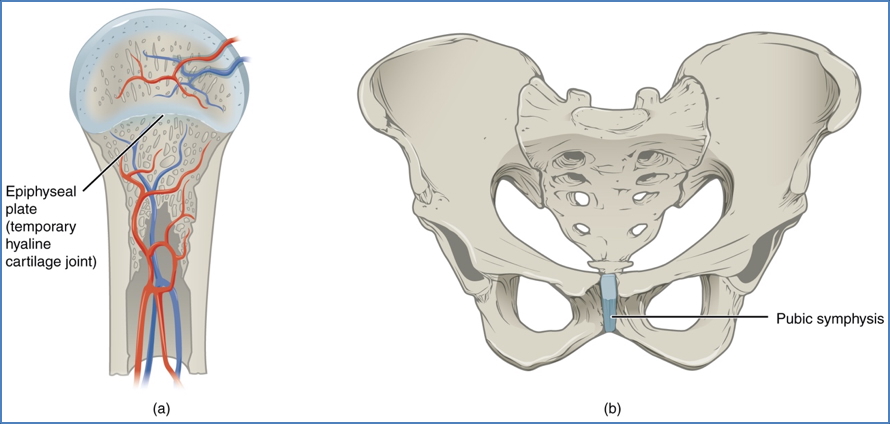
3. Synovial Joints
- Joined by: Articular capsule
- Movement: Freely movable
- Joint cavity: Present
- Key Structures:
- Articular Cartilage (Hyaline):
- Covers bone ends (≈1 mm thick)
- Reduces friction and absorbs shock
- Avascular; nourished by synovial fluid
- Contains chondrocytes within a high H₂O content ground substance
- Synovial Fluid:
- Modified blood filtrate from synovial membrane
- Lubricates joint
- Provides nutrients to cartilage
- Synovial Membrane:
- Lines all non-cartilaginous surfaces inside the joint capsule
- Ligaments & Tendons:
- Composed of collagen
- Poorly vascularised; heal slowly
- Articular Cartilage (Hyaline):
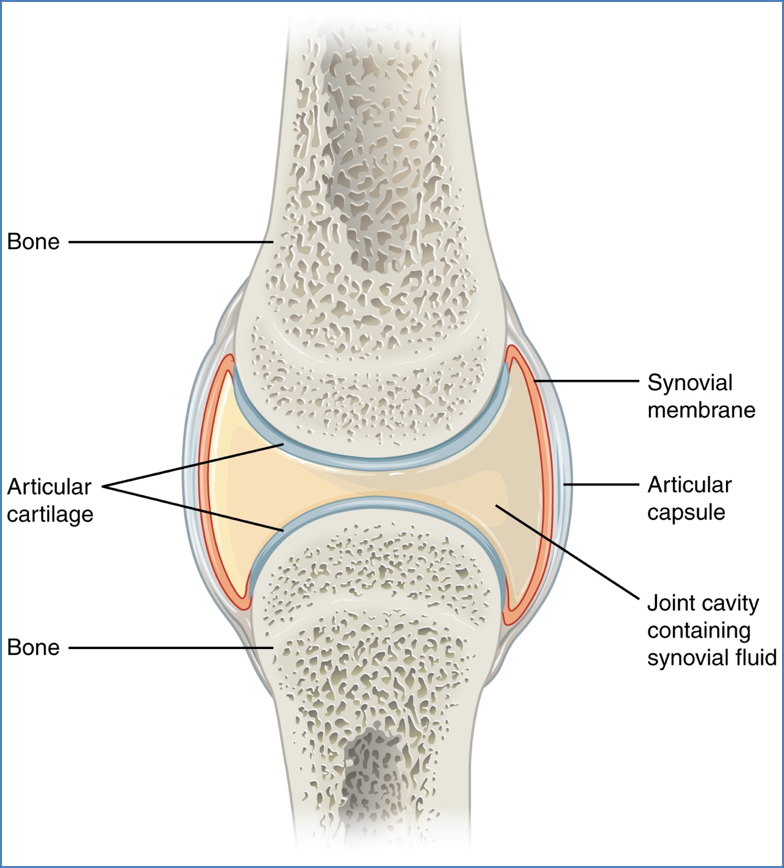
Types of Synovial Joints
- Plane – Gliding motion (e.g. intertarsal joints)
- Hinge – Flexion/extension (e.g. elbow, knee)
- Pivot – Rotation (e.g. proximal radioulnar joint)
- Saddle – Opposing concave-convex surfaces (e.g. thumb carpometacarpal joint)
- Ball and Socket – Multiaxial (e.g. shoulder, hip)
- Condyloid (Ellipsoid) – Flexion, extension, abduction, adduction (e.g. metacarpophalangeal joints)
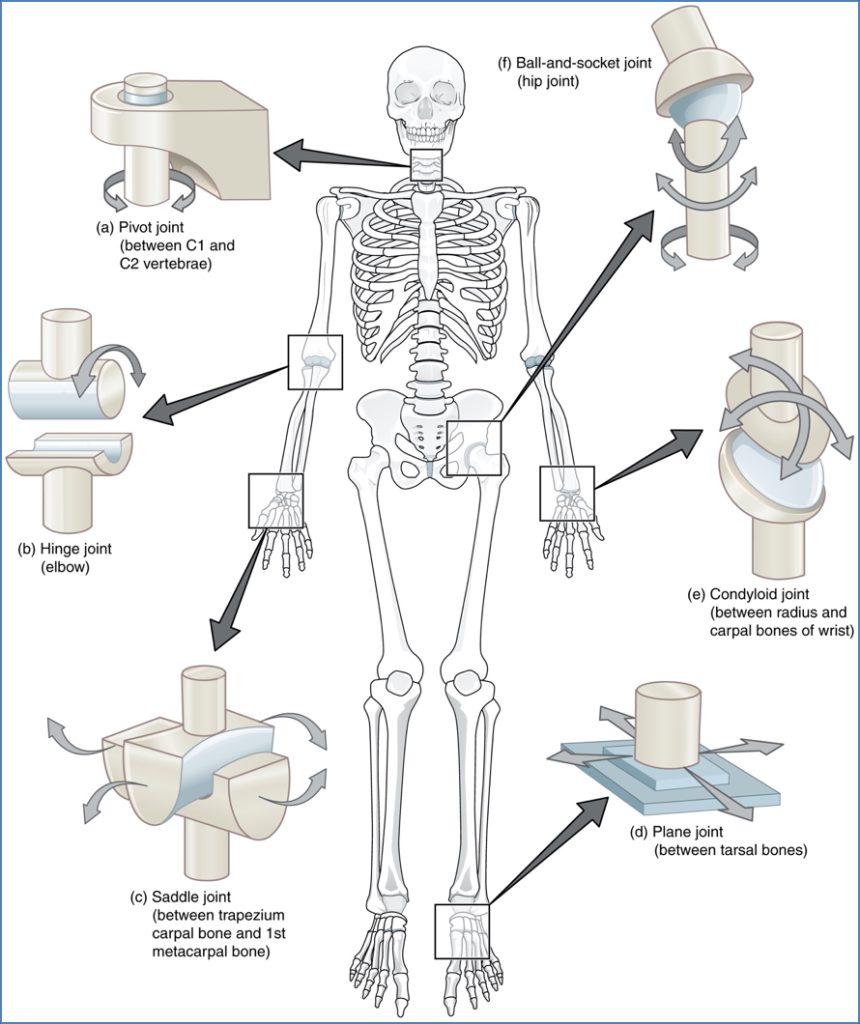
Synovial Joint Movements
- Gliding – Flat surfaces sliding
- Angular:
- Flexion / Extension
- Abduction / Adduction
- Circumduction
- Plantarflexion / Dorsiflexion
- Rotational – Medial / Lateral rotation
- Special Movements:
- Inversion / Eversion
- Supination / Pronation
- Protraction / Retraction
- Elevation / Depression
- Opposition (thumb movement)
Synovial Joint Stability
- Determined by:
- Shape of articular surfaces (bony congruity)
- Ligaments:
- Capsular
- Intracapsular
- Extracapsular
- Muscle tone around the joint
Movement Limiting Factors:
- Shape of bone ends
- Position and strength of ligaments
- Tension in muscles and tendons
- Contact with surrounding structures (e.g. soft tissues)
Bursae and Tendon Sheaths
- Accessory structures associated with synovial joints
- Bursae:
- Fluid-filled sacs lined by synovial membrane
- Reduce friction between structures (e.g. bone, tendon, skin)
- Tendon Sheaths:
- Elongated bursae wrapped around tendons
- Especially common in confined spaces (e.g. wrist)
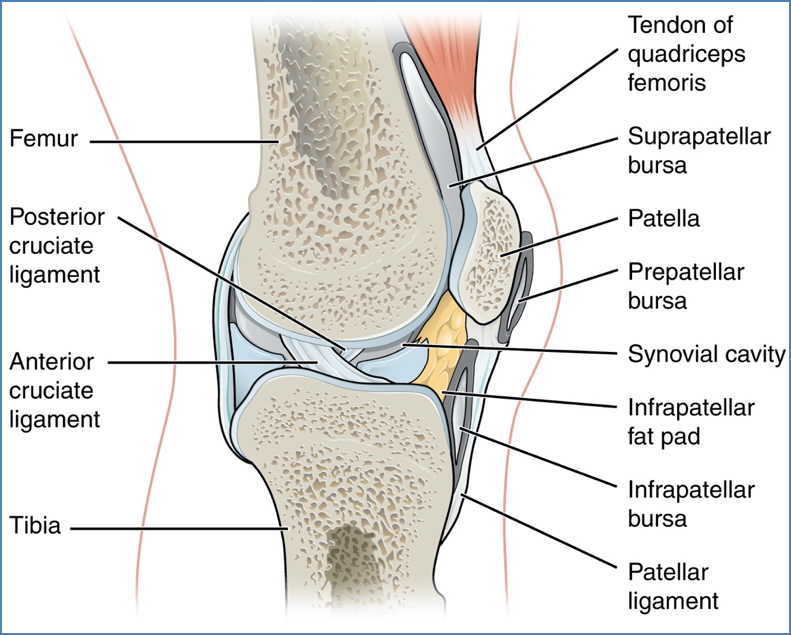
Summary
Joints are vital anatomical structures that connect bones and, in many cases, allow movement. They are classified into fibrous, cartilaginous, and synovial types, each with distinct structures and functions. For a broader context, see our Musculoskeletal Overview page.